There are times in the auto world when a car arrives not with the thunder of revolution, but with the quiet whir of an electric motor, barely noticed at first, dismissed by the masses, yet destined to become a marker in the timeline. Such was the case when Nissan introduced the Leaf to the United States back in 2010.
We Americans, seasoned in the rolling thunder of V8s and the high stance of crossovers, didn’t know what to make of a city-sized hatchback powered by little more than electrons and optimism.
The Nissan Leaf Evolution
In the USA, we’ve always had a soft spot for touring cars and SUVs, so it’s fair to admit that the first generation wasn’t exactly a world-beater. Still, you could see Nissan’s effort shining through.
With each new iteration, the car matured, almost like watching a person grow up, smarter technology, sharper handling, a more refined look, and a broader skill set that let it perform impressively across the board.

The Leaf was never about winning over the drag strip crowd, it was Nissan’s proof of concept, a rolling R&D project to see if electric could ever go mainstream.
As the years ticked by, the Leaf underwent the kind of metamorphosis typically reserved for Hollywood protagonists. The awkward, bug-eyed pioneer gradually grew sharper, stronger, and more confident, its range crept from 73 miles to over 200, its styling ditched the amphibious for the almost-attractive, and suddenly, what once felt like a compliance car became a legitimate daily driver. By the second generation in 2018, you could almost forget you were an early adopter. The city runabout had matured. But, in a world now flush with 300-mile Teslas and Mustang Mach-Es, could the Leaf’s next move put it back in the electric spotlight?
How The Nissan Leaf Transitioned
- The 2026 Leaf transitions from its traditional hatchback design to a sleek compact SUV, built on Nissan's CMF-EV platform shared with the Ariya. This new architecture supports a significant range increase, with estimates suggesting up to 373 miles (600 km) on a single charge, a substantial improvement over the previous maximum of 212 miles.
- Addressing past charging limitations, the new Leaf incorporates the North American Charging Standard (NACS) port, granting access to Tesla's Supercharger network. Interior upgrades include a dimmable panoramic sunroof, 19-inch alloy wheels, and a redesigned cabin featuring a push-button shifter and an intuitive infotainment system.
- Emphasizing eco-friendliness, the 2026 Leaf utilizes recycled plastics and sustainable fabrics within its interior. Safety enhancements feature Nissan's updated ProPILOT Assist suite, offering adaptive cruise control, lane-keeping assist, and automatic emergency braking, aiming to provide a safer and more comfortable driving experience.
Last week, in the most Colorado fashion imaginable, an eagle-eyed Redditor on r/electricvehicles stumbled upon what appears to be the next-generation Leaf, complete with camo and a couple of secrets hiding beneath the skin.
“Looks Model Y sized, and sorta shaped,”
Noted DiosMIO_Limon, as the community collectively zoomed, enhanced, and debated every pixel.
One crucial detail: the sighting wasn’t just notable for the new silhouette, but for what was lurking near the charge port, a NACS connector, and, tucked discreetly, what’s believed to be a CCS adapter. For those following the charging wars, this changes everything.
Why Colorado Is The Testing Ground
Colorado, with its oxygen-starved mountain passes, is ground for prototype hunting.
“I have to say, running into prototype testing was an unexpected cool part of living in Denver,”
Wrote drewc717, recounting his previous run-ins with mules like the Porsche 918 on Loveland Pass. In the thin air, cooling systems and battery management are pushed to the edge, and for EVs especially, this is where engineering shortcomings are exposed and reputations are made.
“I saw a 918 on Loveland Pass, too. Just minding my own business...all of a sudden… WOW a 918!!”
Added FatahRuark. If you want to build an electric car that works everywhere, you prove it here.
Back to our new Leaf.
“This looks more like a Model Y or an ID4 than a Leaf. It seems to be significantly larger.”
Remarked rossmosh85, and it’s not just size that’s changed, Reddit sleuths pointed out,
“Hopefully, this has a liquid-cooled battery. It would be a massive mistake to stick with the dumb air-cooled one.”
For the uninitiated, the Leaf’s continued use of air-cooled packs has been a sore spot, especially for drivers in hot climates where battery degradation is no joke. Whether Nissan has finally embraced liquid cooling remains the million-dollar question, but every prototype detail is scrutinized for clues.
What Makes Denver a Challenge
- Situated at approximately 5,280 feet above sea level, Denver's reduced oxygen levels, about 85% of those at sea level, pose unique challenges for vehicle engines, particularly in combustion efficiency and power output. This environment allows manufacturers to assess and refine engine performance, fuel delivery systems, and emissions controls under conditions that simulate high-altitude driving scenarios.
- Denver's proximity to the Rocky Mountains offers a variety of terrains, including steep inclines and winding roads, as well as a range of weather conditions from hot summers to snowy winters. This diversity enables comprehensive testing of vehicle durability, handling, and performance across different driving conditions, ensuring reliability and safety in varied environments.
- Colorado has adopted rigorous emissions standards, aligning with California's low-emission vehicle regulations. Denver's unique topography can lead to temperature inversions that trap pollutants, exacerbating air quality issues. Testing vehicles in this context allows manufacturers to evaluate and improve emission control technologies to meet strict environmental regulations and address real-world air quality challenges.
Segment-wise, the debate rages. Vanzumi insists,
“But the Nissan Ariya is already Model Y dimensions, I think it should be more close to the original Leaf, so ~440cm. Or at least I hope...”
While pidude314 noted,
“Volt->Bolt->ID4. It's smaller than a Model Y or ID4. It's in the Niro, Kona, and Bolt EU segment.”
What’s clear is Nissan is taking aim at the heart of the EV market, no longer content with just being the quirky alternative. The new Leaf seems ready to compete toe-to-toe with the likes of Kona Electric and Chevrolet Bolt EUV.

One of the more fascinating details, though, is the charge port situation:
“There’s a second hatch on the driver's side fender. Is that a second charge port, or are they still trying to determine which side it should be on?”
Asked wickedsmaht.
“Daisy charging port? Indecisive design committee? Charge port lives on the opposite side of the steering wheel for all markets, maybe?”
Speculated another. Yet the real shocker is the visible support for both NACS (the Tesla connector, now becoming the North American standard) and a CCS adapter.

Nissans Leadership Comments
Officially, Nissan’s leadership is staying tight-lipped but enthusiastic. Ivan Espinosa, Nissan’s chief planning officer, said,
“Over the next two years, we are excited to roll out an impressive lineup that will redefine the road! This includes the reimagined Nissan LEAF, and a daring new Micra EV...We are committed to investing in products that embody Nissan's very best qualities. To our passionate fans and loyal owners around the world, I can assure you, this is just the beginning of an exciting journey ahead.”
Christian Meunier, chairman of Nissan Americas, reinforced the message:
“North America is a key market, and we are taking quick actions to get us back to growth and set the stage for the exciting products to come...”
A decade after it broke the silence of American roads with nothing but a faint electric hum, the Leaf is once again poised at the threshold of transformation. Its legacy as the approachable, attainable, even lovable oddball is secure, but if Nissan nails the fundamentals this time (range, cooling, charging), it just might reclaim its crown. In an industry obsessed with the next big thing, sometimes the most revolutionary act is simple evolution, quietly, methodically, and right under our noses, in a Denver parking garage.
Image Sources: Nissan Newsroom, r/ElectricCars subreddit
Noah Washington is an automotive journalist based in Atlanta, Georgia. He enjoys covering the latest news in the automotive industry and conducting reviews on the latest cars. He has been in the automotive industry since 15 years old and has been featured in prominent automotive news sites. You can reach him on X and LinkedIn for tips and to follow his automotive coverage.


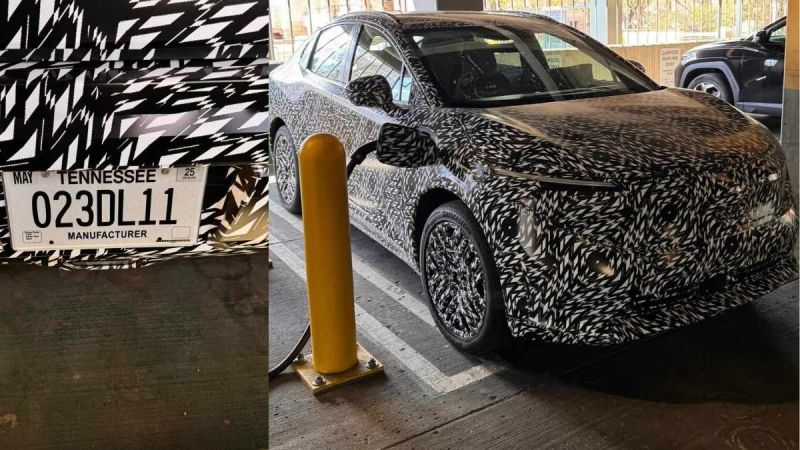




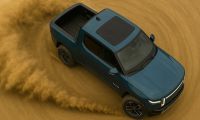
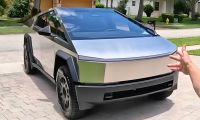
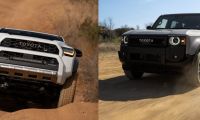

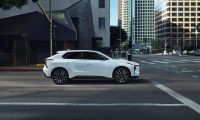
Comments
Sounds like Ariya size. What…
Permalink
Sounds like Ariya size. What’s the difference?
I wonder if the battery has…
Permalink
I wonder if the battery has thermal management yet? The lack of it has always been the Leaf's weak point.